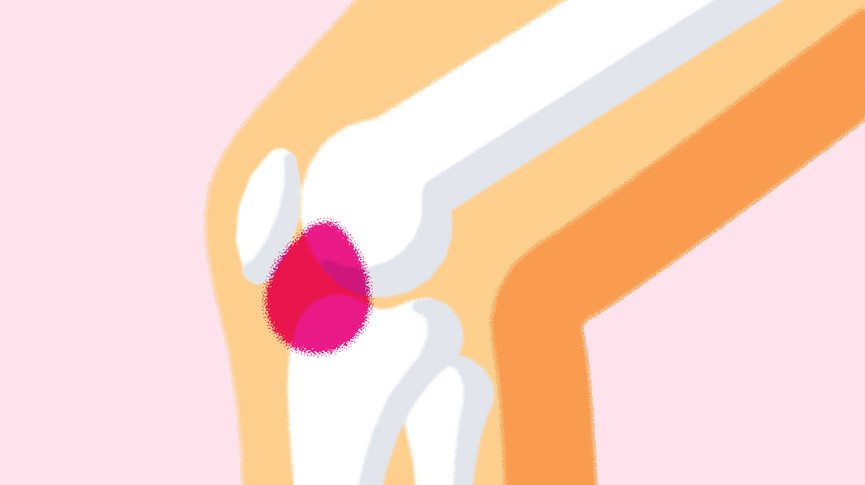The Hard Truth about Menopause and Osteoporosis

Osteoporosis is often called the “silent disease” because it usually progresses without physical symptoms. Many with osteoporosis don’t even realize they have it until a sudden fall, bump or strain that wouldn’t normally be serious causes a fracture or break. The relationship between bone density and estrogen levels also means women over the age of 50 have the greatest risk, when estrogen levels naturally fluctuate. About 33% of menopausal women will fracture a bone due to osteoporosis. However, you don’t need to live in fear of weak bones. Whether you are approaching menopause or have already had your last period, there are ways you can slow the rate of or prevent bone loss and protect yourself from injury.
What is osteoporosis, and how is it related to estrogen?
Bone is living tissue that your body is constantly breaking down and replacing. Until roughly the age of 30, your body usually builds more bone than it loses. After about age 35, more bone is broken down than is built, causing a gradual loss of bone mass. Some bone loss is completely normal and nothing to be concerned about! However, after a certain amount of bone breakdown, a woman has osteoporosis.
Thanks to estrogen, women are four times more likely than men to develop this disease. After menopause, when a woman stops ovulating, her estrogen levels dramatically decrease. In the first 10 years after a woman’s last period, she loses as much as half of her total bone density. This is due to the relationship between estrogen and another hormone, calcitonin. Calcitonin helps bones absorb calcium so they can build new bone tissue. When estrogen levels fluctuate, so does calcitonin.
Additional Factors and Symptoms
There are a number of other additional factors that can put you at greater risk, such as your family history and ethnicity (Caucasian and Asian women are more likely to develop osteoporosis). Your diet and lifestyle also play a role in helping you maintain healthy bones, as women with a diet low in sources of vitamin D or calcium and those who smoke or drink too much are also at more risk.
Although osteoporosis commonly manifests without physical symptoms, there are some signs to look out for, such as back pain, stooped posture or loss of height over time. However, these generally appear later, so it’s important to be proactive. It’s a good idea to speak to your doctor regularly about your bone health, but especially if you are approaching menopause or fit any of the additional criteria. Even if you aren’t experiencing any symptoms, your doctor can do some tests to determine the health of your bones, and recommend steps you can take to protect them.
What You Can Do to Prevent and Treat Bone Loss
Regardless of whether you are just hoping to prevent bone loss or if you have already been diagnosed, there are a number of things you can do to maintain or improve bone health. However, if you have already been diagnosed with osteoporosis, there are additional options your doctor can provide to help treat and protect your bones.
To Prevent Bone Loss
Exercises: Exercises that help you build and maintain bone density are crucial for all women, but especially for those in menopause. Weight-bearing and muscle-strengthening exercises are particularly good for menopausal women because of their role in maintaining bone density. Weight-bearing exercises are activities like jogging, tennis or even walking and elliptical machines. Muscle-strengthening exercises, AKA resistance exercises, include lifting weights or doing Pilates and yoga.
However, be careful about which exercise you choose, particularly if you are at risk for or have already broken a bone. Certain exercises, especially if they’re high-impact or involve balancing or bending over, may not be safe for those at risk because they could lead to a fall. So practice safe exercise: stay hydrated, start slow and don’t forget to protect your pelvic floor when you exercise, as lower levels of estrogen can also weaken those muscles. Your doctor can help you find a safe exercise routine that fits your fitness level and helps you build bone mass.
Calcium and vitamin D: Both calcium and vitamin D are essential for bone health (calcium helps build bones, and vitamin D helps your body absorb calcium) but many women typically don’t get enough of either in their daily life. Over the age of 51, it’s recommended that women have at least 1200 mg of calcium and 500 IU of vitamin D per day. Dairy products (not just milk!), leafy greens like collard greens and kale, and sardines are high in calcium. You can get vitamin D from short daily stints in the sunshine. However, if you aren’t getting these doses from your diet or through sun exposure, your doctor can recommend supplements to help make up the difference.
To Treat Existing Bone Loss
If you have already been diagnosed, a healthy diet and exercise routine will be important to help prevent additional bone loss (with the added benefit of helping with other menopause issues as well). However, your doctor may also prescribe medication or hormone-replacement therapy to treat osteoporosis.
Prescription medication: For women who have already been diagnosed with bone density issues, prescription medications, like bisphosphonates, can be used to slow bone breakdown and maintain bone density. There are a lot of different of options, so work with your doctor to find a medication that works for you.
HRT: Hormone-replacement therapy (HRT) and estrogen-replacement therapy (ERT) have been shown to be successful in slowing bone loss and even regaining bone density. HRT is a combination of estrogen and progesterone, while ERT contains only estrogen, and your doctor can prescribe a hormone therapy that is best for your particular case.
When it comes to your bone health, the most important thing is to be aware and proactive. If you have a higher risk of decreased bone density or have already been diagnosed with osteoporosis, talk to your doctor and you can decide together how to protect the health of your bones. Even with bone loss, you can – and should – enjoy a happy and active life.

A collective group of “lady experts” at Intimina who love sharing our personal experiences, even when they are a little too personal. We believe it’s time to start breaking down the taboos around menstruation, motherhood, and menopause, and start owning our female health.


